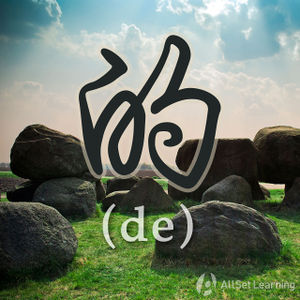Difference between revisions of "Expressing possession with "de""
ViktorMugli (talk | contribs) |
Wu.mengmeng (talk | contribs) |
||
| Line 1: | Line 1: | ||
| + | {{Grammar Box}} | ||
In Chinese, possession is marked with the particle 的. This particle work's in a similar way to 's (apostrophe s) in English, but is used much more widely. | In Chinese, possession is marked with the particle 的. This particle work's in a similar way to 's (apostrophe s) in English, but is used much more widely. | ||
| Line 36: | Line 37: | ||
[[Category:A1 grammar points]] | [[Category:A1 grammar points]] | ||
| + | {{Basic Grammar|的|A1|N1 + 的 + N2|我的 <em>老师</em>|grammar point|ASGUHQD2}} | ||
| + | {{Similar|Expressing close possession}} | ||
| + | {{Similar|Modifying nouns with adjective + de}} | ||
| + | {{Similar|Modifying nouns with phrase + de}} | ||
Revision as of 03:25, 13 June 2012
-
Level
-
Similar to
-
Used for
-
Keywords
In Chinese, possession is marked with the particle 的. This particle work's in a similar way to 's (apostrophe s) in English, but is used much more widely.
Structure
Noun 1 + 的 + Noun 2
Examples
- 我 的 啤酒。
- 你 的 葡萄酒。
- 他 的 书。
- 他们 的 东西。
- 小李 的 手机。
See also
Sources and further reading
Books
- Integrated Chinese: Level 1, Part 1 (3rd ed) (pp. 45) →buy
- New Practical Chinese Reader 1 (新实用汉语课本1) (pp. 87) →buy
- New Practical Chinese Reader 1 (新实用汉语课本1)(2nd ed) (pp. 101-2) →buy
- New Practical Chinese Reader 2 (新实用汉语课本2) (pp. 64-5) →buy



